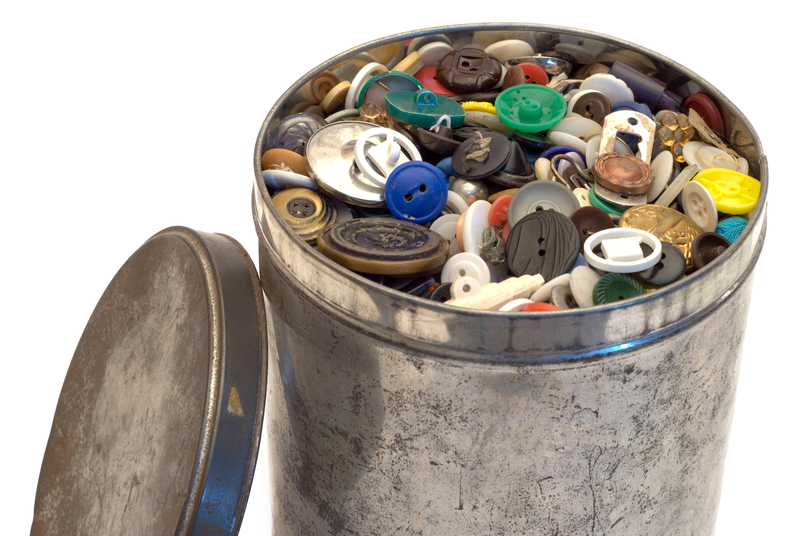Achieve Zero Waste at Home with Pro Recycling Tips
Adopting a zero waste lifestyle at home not only benefits the planet but also brings order, clarity, and mindfulness to your daily routine. Tackling household waste may seem daunting, yet with the right recycling strategies and clever habits, everyone can make meaningful strides toward minimizing landfill contributions. In this comprehensive guide, you will learn expert-driven zero waste tips and recycling hacks to propel your home toward sustainability, reduce your ecological footprint, and nurture a greener future for generations to come.
Understanding the Zero Waste Philosophy
Zero waste is more than just a buzzword or fleeting trend. It's a holistic approach aimed at minimizing waste through responsible production, efficient recycling, eco-conscious consumption, and sustainable living. The central philosophy is encapsulated in the 5 R's: Refuse, Reduce, Reuse, Recycle, and Rot. By prioritizing these principles, households can achieve substantial waste reduction and resource conservation.
Why Strive for Zero Waste at Home?
- Conservation of Resources: Reducing the amount of waste saves natural resources and energy.
- Cost-Efficiency: Less waste equals fewer purchases and lower disposal costs.
- Health and Well-being: Less exposure to toxins from plastic and landfill materials.
- Positive Environmental Impact: Lower greenhouse gas emissions and less clutter in landfills.
Pro Tip: Even small, incremental changes make a difference over time. Start with one area of the home and gradually expand your efforts.

10 Pro Recycling Tips to Achieve Zero Waste at Home
1. Master the Basics of Home Recycling
Understanding what can and cannot be recycled in your local area is the foundation of effective recycling at home. Take time to consult your municipal guidelines. Generally, items like clean plastic bottles, paper, cardboard, metal cans, and glass jars are widely recyclable, while items contaminated with food waste or certain plastics may not be.
- Rinse containers to eliminate food residue.
- Keep lids and caps separate unless specified.
- Flatten cardboard boxes to save space.
2. Set Up An Organized Recycling Station
Designate a convenient and organized spot in your kitchen or garage for separating recyclables, compost, and landfill waste. Use clearly labeled bins to avoid mistakes. Consider color-coding or using images for added clarity, especially for children.
- Place bins in high-traffic areas to encourage use.
- Provide a composting solution for food scraps.
- Keep an occasional 'fix-it' bin for items that can be repaired or creatively reused.
3. Compost Organic Waste
Roughly 30% of household waste consists of food scraps and yard trimmings, which are ideal for composting. Composting transforms organic material into nutrient-rich soil, excellent for gardens or houseplants. This simple habit drastically reduces landfill waste while benefiting your green spaces.
- Collect fruit and vegetable peels, eggshells, coffee grounds, and yard waste.
- Avoid adding meat, dairy, or oily foods, as they can attract pests.
- If outdoors, ensure a mix of "greens" (kitchen scraps) and "browns" (leaves, cardboard) for balanced composting.
4. Refuse Single-Use Plastics
Single-use plastics--bags, straws, utensils, and packaging--are a leading source of ocean and landfill pollution. Swap these with reusable alternatives:
- Bring your own reusable shopping bags, water bottles, and coffee cups.
- Choose produce without plastic wrapping or opt for paper alternatives.
- Shop in bulk and refill containers whenever possible.
5. Embrace the Art of Reusing
Before discarding items, consider how they might be repurposed or reused. Glass jars, for example, can be used for storage, while old t-shirts become cleaning rags. This mindset conserves resources and reduces demand for new products.
- Collect glass containers for pantry storage or organization.
- Donate gently used clothes, books, and furniture.
- Creatively upcycle materials for DIY projects, crafts, or garden use.
6. Buy with a Zero Waste Mindset
Smart purchasing decisions significantly reduce waste. Seek out brands committed to minimal or zero packaging, and purchase higher quality, longer-lasting items whenever possible.
- Support local farmers and markets for unpackaged products.
- Choose refillable, bulk, or package-free options.
- Purchase second-hand when appropriate.
7. Recycle Electronics Responsibly
Electronic waste (e-waste) is a rapidly growing concern. Laptops, phones, batteries, and small appliances should never be thrown in the trash. Instead, find certified e-waste recycling locations or return items at electronic stores that offer take-back programs.
- Delete personal data before recycling devices.
- Check for local community e-waste collection events.
- Repurpose old electronics if possible (e.g., use an old tablet as a digital photo frame).
8. Mind Your Food Waste
The average household throws away about 30% of purchased food. Planning meals and understanding food expiration labels can curb this loss and support your zero waste goals.
- Make detailed shopping lists and stick to them.
- Store food properly to extend freshness.
- Freeze leftovers and excess produce.
- Create meals from ingredients you already have before buying more.
9. Fix and Mend Instead of Disposing
With a little creativity and resourcefulness, many broken items can be repaired rather than tossed. From clothing to kitchen appliances, accessing tutorials and local repair shops can extend the life of your possessions and save money.
- Learn basic sewing skills to mend clothes.
- Fix small appliances or furniture before replacing them.
- Join community repair cafes or online DIY groups.
10. Educate and Involve Your Household
A successful zero waste home relies on collaboration. Encourage family members, roommates, and even children to participate in recycling and waste reduction efforts. Make sustainability a shared goal.
- Assign recycling and composting tasks.
- Explain the environmental and personal benefits.
- Celebrate milestones (e.g., week with no trash!) to keep everyone motivated.
Smart Recycling at Home: Beyond the Basics
Know Your Plastics
Not all plastics are created equal. The numbers within the recycling symbols (1-7) denote specific types of plastic--some are curbside-recyclable, some are not.
- #1 PETE & #2 HDPE are widely accepted for recycling.
- #3, #6, #7 (PVC, polystyrene, other) are less commonly recycled--seek specialty programs.
- Reduce use of mixed-material packaging as these are often unrecyclable.
Pro recycling tip: Avoid wish-cycling--if you're unsure about an item, check guidelines first rather than contaminating the recycling load.
Hazardous Waste: Handle With Care
Items like paint, chemicals, batteries, and CFL light bulbs don't belong in your typical recycling bin. Research local hazardous waste disposal services to handle these responsibly.
- Schedule drop-offs at approved collection centers.
- Store hazardous items safely away from children and pets.
Never pour chemicals down the drain! They can pollute water systems and harm wildlife.
Paper and Cardboard Recycling Tips
Papers with heavy food contamination (e.g., pizza boxes with grease) should be composted or disposed of rather than recycled. Shredded paper is difficult to sort but can be placed in paper bags before recycling in some municipalities.
- Remove tape, staples, and plastic windows from envelopes and boxes before recycling.
- Reuse scrap paper for notes and crafts before recycling.
Glass Recycling Best Practices
Not all glass is equal: drinking glasses, pyrex, ceramics, and light bulbs often can't be recycled with bottles and jars. Stick to food and beverage containers unless local facilities accept other glass types.

Frequently Asked Questions on Achieving Zero Waste at Home
Is it possible to achieve 100% zero waste at home?
While it may be challenging to fully eliminate all waste, the goal is progress over perfection. Even reducing your landfill output by 50% is a significant achievement! Focus on continuous improvement, and don't get discouraged by occasional setbacks.
What are some easy ways to start a zero waste journey?
- Carry a reusable water bottle and shopping bag everywhere.
- Switch to bar soap instead of liquid packaged in plastic bottles.
- Compost fruit and vegetable peels.
- Opt for digital documents and receipts whenever possible.
How can I get children involved in recycling at home?
Make recycling fun and educational. Use colorful bins, create recycling games, and share stories about the planet. Teach them to check labels and compost food scraps after meals.
Conclusion: Making Zero Waste a Way of Life
Every step toward achieving zero waste at home--from mindful purchasing to expert recycling--increases your positive impact on the environment. While perfection may be elusive, sustained effort, education, and community encouragement can bring you closer to a more circular, waste-free lifestyle.
Ready to begin your journey? Start today with these pro recycling tips and inspire others by sharing your progress. Together, we can transform our homes into models of sustainability and stewardship, proving that a zero waste future is both attainable and rewarding.
Remember: Small everyday actions amount to lasting change!